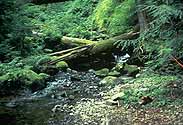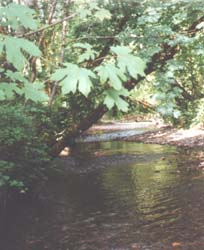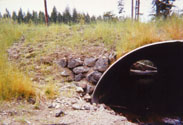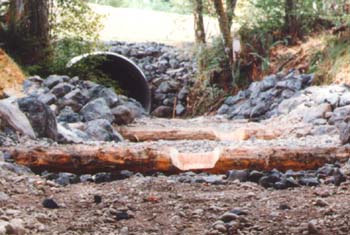LWD (tress, limbs, root wads) within a stream or river can have a big influence on a stream. Not only does it provide an important input of organic material, it helps to create the dynamic structure of the stream.
Counting individual pieces of woody debris as well as the number of log jam gives an indication of available habitat to fish.








